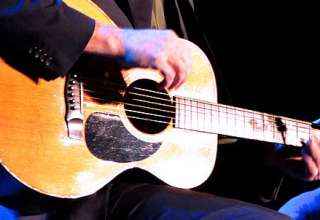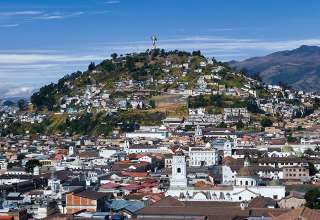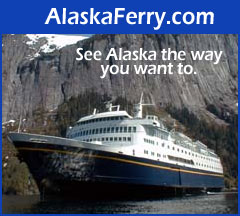This installment is courtesy of Weave Cleveland, T-Boy Writer, Musician and Cinematographer of Vancouver’s Travel Guys.
I have to address how serendipity and good fortune come together; When I was in Grade 11 (I am Canadian so ‘Grade 11′ is the nomenclature as opposed to the ’11th Grade’, which is how I hear my American cousins say it), I was selected for a special new course. Twenty select students were chosen from Grade 11 and Grade 12. It was called the Sooke River Course and we got to go out in the field and learn about our natural surroundings and our history. We became biologists, paleontologists, anthropologists and all-round explorers.
Assignments such as excavating, by hand, an indigenous native Indian midden, or wading out in teams, in the mouth of the Sooke River at low tide to measure out two-square-metre grids with string and spikes over a zone of sea grasses and other plants, then documenting and reporting everything we could see within our square, be it plants or other creatures. I remember there were large white fleas bouncing about that annoyed us on that sunny day.
The Sooke River Course only existed for the year 1979 and I was fortunate enough to be part of this fabulous experiment.
When I give thought about Three Things You Don’t Know About Sooke, British Columbia, I am compelled to share 3 things you really don’t know about Sooke and will never learn about on TripAdvisor. *I am not trying to insult users of TripAdvisor, of which I am one… I am just saying… you know what I mean.

First up: The Belvedere Hotel.
Up in the bush behind the Sooke River Hotel and Castle Pub (another establishment which is no longer there), I could never imagine there once stood a fancy hotel. I grew up in this village, how could I not know about it, nor my mother nor grandparents?!
As a class we walked a short single lane dirt road revealing two old tire lanes which rapidly vanished into bushes and trees. Our instructors guided us through the forest to the top of the hill where we came upon the stone and concrete foundation the old Belvedere Hotel. Mother Nature had aggressively taken it over. It was so dark in the forest that one could barely notice it.
We stood in the forest and got our history lesson. It was so powerful you wondered if there were ghosts here. Why had it never been part of the fascinating conversations of adults when I was growing up? Long gone? Out of sight, out of mind? What a discovery for me.
The hotel burned down in 1934. One of the first things we were told was about Emily Carr, staying here and painting. The hotel was visited by British Royalty, The Prince of Wales, powerful political players and famous personalities. Now the forest had grown back and you could no longer see the harbour nor the wharf. It was gone and lost in time. It was called the Belvedere Hotel.

Second up: Grouse Nest
Since childhood, Grouse Nest was always a well-known secret. An exclusive hideaway lodge resort. Not a place for us regular folk. It is rural and the big entrance is still hidden deep in the dark forest canopy. Recently, I was on Gillespie Road and I failed to find it – I was going by memory and hadn’t been there for 30 years so it too, may have been obscured by Mother Nature.
Grouse Nest is on private property so you certainly felt like you were trespassing if you entered. I once turned down the perfectly paved driveway back in the seventies but it only took 30 meters for me to feel like I was not where I was supposed to be. I got scared and backed up to Gillespie Road, which can be dangerous because Gillespie is one of those island roads that is tangled like a map of the brain. It may be rural and quiet but a car could still come around the bend and hit you.
I heard stories. Frank Sinatra stayed there. That one is confirmed … but Elvis Presley? … that could be a rumour. I heard one simple story of a brilliant teenage girl in a gathering of wealthy folks who failed to tell the chef that she was a vegetarian. She ate what was served and later, when asked why, she discreetly replied that she didn’t want to insult the chef.
For a time, when I was young, people would notice float planes landing at Grouse Next, which is in deep on the shore of the Sooke Basin, and speculation would abound as to whom it was. John Wayne, we heard.
By the late 70’s, activity at Grouse Nest went to sleep. How could they maintain the property and keep up with yearly property taxes? Grouse Nest is still there today and is still the biggest secret. I personally know nobody who can tell me anything about it, where I might trust I am getting first-hand knowledge. Visit, Mysterious East Sooke ‘Grouse Nest’ up for sale – Sooke News Mirror

Third up: The Sooke Potholes
Growing up in 1960s & 70s, Sooke was sweet and enchanting. No traffic lights, no McDonald’s restaurant, no bumper-to-bumper traffic. The Sooke Potholes swimming spot was alive every summer like our own private Six Flags Amusement Park. Nowadays it is a beautiful government controlled Provincial Park and as a local, to me at least, that’s a form of ruin. I got over it. Once again, I believe you understand.
1960’s – Chevy’s, Ford pickups, hot rods, station wagons. 1970’s – the AMC Gremlin, Ford Pinto, hot rods, Kawasaki motorcycles. Picture a dirt road that bumbles alongside the river where everybody clamors for a space on the shoulder to park their vehicle and the children tumble out of the car, excited to go swimming in their favourite pothole. My mother had a black and white Polaroid she enjoyed showing people of me, her fat little toddler, at the second pothole ‘eating the beach’ as she would say. Yep, that’s me in my diaper grabbing sand, pebbles and stones and putting it all in my mouth. I saw that picture many times throughout my life.
What I am about to tell you may now sound like folklore and is as real as I am. I recently traveled back to the potholes because I was researching ideas for the three things I might talk about. It’s been 40 years since I had been to the potholes, which is sad because we once lived on Sooke River Road about 2.5 kilometers from the potholes, which is at the end of Sooke River Road. I had never seen the provincial park that was built, but I had heard about it. Wow, nicely paved asphalt and dedicated parking lots at different elevations and stations. Public restrooms, information boards, bear and mountain lion caution signs.
The road never went that far when I lived in Sooke. My goodness, it goes all the way up to the falls. And groomed walking trails go much further. The potholes themselves seem to look much different than the way I remember them. Could it be erosion or drought? I don’t quite recognize the place we all went swimming and recreating for all of our young years until it was time for further education or career paths. It is still as beautiful as ever though. It even looks less trodden now.
However, it is the names of each pothole that is missing. The government abandoned them and to make my dream worse I could find absolutely nothing online that referred to the names of the potholes. The government instead gives no names to the potholes but rather gives names to the beaches: Crescent Beach, Sand Pebble Beach, Skipping Rock Beach, Ripple Rock Beach
It feels like a government conspiracy that the names we all knew them by have been erased from history. The Potholes is not something you didn’t know about Sooke. Everyone knows about the potholes. They might be the reason one bothers to travel to Sooke. What you don’t know is the names everyone, including our mayors, knew the potholes by and I fear that once our generation is gone so might be the real names.
I remembered two of them easily, but I was having trouble recalling all four of them, so I used Facebook Messenger to reach out to get help with my slipping memory. (My sincerest thanks to Eric Carlson, Laurie Vanderkerkhove and Carol Michaylenko for all coming to my aid.)
The first pothole, which appeared less like a pothole on my recent visit and more like a place in the river to simply go swimming, is called Bradley (Crescent Beach). The second pothole is called Little Lady (Sand Pebble Beach). That’s where I ate the beach. The third pothole is called Wielers (Skipping Rock Beach). There were never any signs to be found back in the old days. We just knew them by their names, so it is phonetical – which is why Eric, Laurie and Carol each came back with a different spelling; Wielers, Wylers, Whylers. This pothole has the best beach and it was my favourite one to swim in. Larger with deeper spots but in areas, shallow enough that the summer sun kept it at a nice temperature.
The potholes are geologically old so the rocks are all smooth. Nice to make slides with and nice to jump off of. The fourth pothole is called Beer Bottle (Ripple Rock Beach). Now, I never used to swim at Beer Bottle because it is where the older high school kids swam. They were cool. I felt too young and abided by the unwritten social rules. I could never see them from Wielers but I could hear them, jumping off the cliff edges and laughing and hooting. I remained in my station.
The potholes were a wonderful place to go growing up. It was thee place! In the off season we could go explore and feel like Huck Finn and Tom Sawyer. Once I had reached high school age, my good friend John Jacobsen and I built rafts to go down the Sooke River, starting at the potholes. What a thrill. I wonder how much danger we were in? The currents and rapids can be pretty aggressive downstream. There have been drownings, unfortunately.
What you don’t know is the names everyone knew the potholes by and I fear that once our generation is gone so might be the real names. Visit and Swim at the Potholes and put it on your Vancouver Island Bucket List Swim At the Potholes – Vancouver Island Bucket List.























